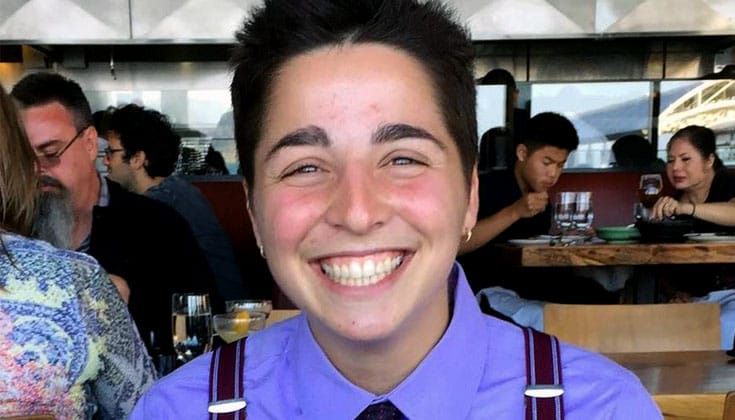I identify as gender-queer and trans, and also as Buddhist, and — though it might be surprising to some — it seems to me a miracle how these two ways of being fit together.
As Buddhists, we recognize that we suffer very much. Just here in the United States, there can be an overwhelming feeling of separation; competition, greed, and disconnection are often part of everyday experience. Our society and culture sometimes foster heightened experiences of greed, hatred, and delusion, and these can live in our individual and collective bodies and hearts.
As a trans person and Buddhist, my commitment to visibility means a commitment to connecting with all living beings, particularly those who are most hurting and vulnerable. If I really care about alleviating suffering for all beings, isn’t that commitment crucial?
The only way to eliminate suffering, a Buddhist might say, is by seeing the suffering clearly. Instead of finding refuge in running away — toward consumption, social media, non-discerning sexual relations, or what-have-you — we find refuge by turning inward and looking deeply at and into our actions, feelings, and bodily experiences. We meet our minds and hearts with a gentle, open, and honest touch, letting their contents become visible to us. This is our way out of suffering and toward freedom, liberation, and happiness.
Living a trans life is also about visibility and liberation. Ironically, in a culture that allows deep hatred toward transgender people—a society in which people are killed, stopped by the police, laughed at with mockery, and misgendered—living a transgender existence can itself be a way out of suffering. It is a life of courage. Living out a trans life is about seeing clearly into who we are, what we desire, and what we yearn for. Living a trans life takes extraordinary honesty. It is about listening to and honoring that internal voice that whispers, “Yes, this is me.”
In my own life, I have been laughed at for wearing “boys’” clothing, stopped by the police in part for looking transgender, and made to feel like an “other,” particularly in groups composed of cisgender women. Such external experiences of visibility can be filled with great pain, as our body, actions, and way of being are attacked by a society that tells us that we’re different in a way that shouldn’t be celebrated. When I look inward, then, and make my emotions and feelings visible, what I see does not always feel very good: what I see so clearly are feelings of shame, sadness, and self-hatred. Visibility, to a trans-Buddhist, thus requires touching some very difficult and painful internal realities.
Visibility, to a trans-Buddhist, requires getting in touch with some very difficult and painful internal realities.
Trans visibility must also be understood in the context of painful external realities: unequal treatment and violence. Some of us, and some of our experiences, are less visible than others. For example, my own individual experience of suffering and oppression as a white gender-queer person looks, feels, and is different from the suffering experienced by transgender women of color, transgender people with disabilities, and other marginalized trans people. Put simply, the voices of suffering from other marginalized trans people may not have the same space or visibility as my own.
Understanding visibility is also to understand danger and violence. When bodies are more visible due to institutionalized violence and cultural stereotyping—when a trans person’s race, class, and immigration status are targeted by the state, for example—this can and does lead to heightened violence. As a trans person and Buddhist, my commitment to visibility means a commitment to connecting with all living beings, particularly those who are most hurting and vulnerable. If I really care about alleviating suffering for all beings, isn’t that commitment crucial?
Though visibility is difficult, it’s ultimately liberating, even life-giving. It has helped connect me with other marginalized people, helping me to feel at home with others who are seeking a space of safe refuge and aspire to live a more connected and less socially regulated life. It means getting in touch with how I feel about my body, my identity, and my heartfelt wish to live a life true to who I am and who I wish to become. It means returning to my basic goodness, even when I’ve forgotten it. It means seeing the truth that my body, mind, and heart are beautiful and do not need changing, except to become always more awake, more aware, and more loving.

